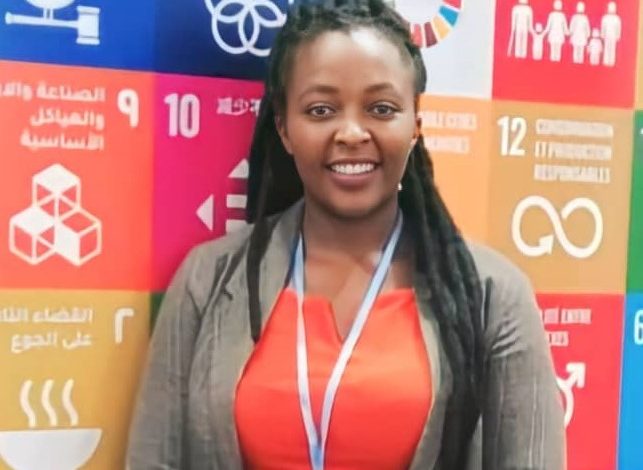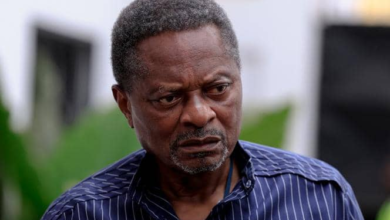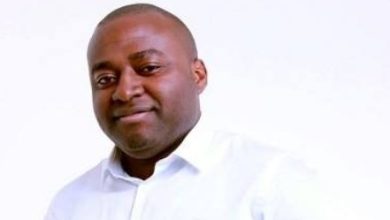Are we getting the power?

By Jaff Marilyn Bongmo
Cameroon is in progress towards achieving her electrification goal of Vision 2035. But are we really getting enough power? There is a saying that ‘Energy is Life’ and the catalyst for every industrialization and development of any nation. Access to energy and the Human Development Index (HDI) of UNDP are connected because access to energy gives access to information, health, human security, wealth, etc. fueling human development in general. The more energy per capita a country consumes, the more developed it is (Durando et al., 2017). Arguably, one of the greatest economic challenges facing the Cameroonian economy is the weak state of the power sector. The lack of stable electricity not only stifles economic growth but also considerably reduces the standard of living for households across Cameroon. In 2017, the Ministry of the Economy, Planning and Territorial Administration estimated that Cameroon loses around 5 percent of potential growth each year to the poor power supply and its associated problems. Furthermore, businesses are crippled by the high cost of electricity while they receive very little in terms of constant power supply.
In recent times, Cameroonians are adopting a ‘bring your own infrastructure’ approach to business, as the power sector has become renowned for its inefficiency. Epileptic power supply has limited the amount of foreign investment into Cameroon, as investors search for countries with more conducive business environments. In order to fully grasp the scale of this problem, a historical expedition through the power sector is necessary.
The Cameroonian electricity sector has undergone many changes. It went from a regional monopoly (from 1929-1972) exercised by three operators (POWERCAM, ENELCAM, and Electricité Du Cameroun (EDC)) to a national monopoly with vertical integration in 1974.
At the end of the 1990s, the electricity sector in Cameroon was one of the prime targets of the all-around restructuring of entire sectors of the national economy, suggested and decided by international donors and implemented locally. It had been advised to transform public electricity companies into legally separate entities. The objective was to reduce the number of problems faced by utilities in developing countries and to guide them toward cost recovery for pricing and improvements in metering, billing, and collection. At the same time, the adoption of the required energy legislation was to provide a legal mandate for the restructuring, as well as the legal framework for private participation in the sector. Arrangements were also made for an independent regulator to establish efficiency, cost considerations, transparency, and equity in the management of the sector, encourage appropriate investment and protect consumers.
The reform that took place in 1998 (Law N ° 98/022 of 24 December 1998) allowed the opening of the production segment to competition. Overall, its objectives were: to disengage the State in the commercial service of electricity; reduce the financial burden of the sector on the state budget; to improve the contribution of the electricity sector to the economy and to the social development of the country. More specifically, she was to allow: increase investment in the electricity sector; to improve the quality of service and the service; improve efficiency in the production, transmission, and distribution of electrical energy; to supply energy at competitive prices to industry and households; confirm the opening of the sector to competition; to encourage the private sector to participate in the development of the electricity sector. Through this law of 1998, a Regulator of the electricity sector was created, in particular, the Regulatory Agency of the Electricity Sector (ARSEL) to ensure the regulation, control, and follow-up of the activities of the operators and the operators in the electricity sector. Before this reform, electricity tariffs were published by the Ministry of Finance and Economy under the proposal of the National Electricity Company (SONEL).
From the public monopoly held by the late SONEL, the State conceded all activities related to this sector to a single private operator, the American group AES Corporation. Thus, through four concession contracts signed on July 18, 2001, the activities of production, transmission, distribution, and sale of electricity were entrusted to the operator AES-SONEL (later sold to Actis and now known as ENEO).
The publication of the law n ° 2011/022 of 14 December 2011 regulating the electricity sector allowed the creation of a transmission system operator removing this segment from the public service concessionaire which managed in an integrated way (production, transport, distribution, and supply). The goal is to attract more private investors into the production segment.
The challenges facing the power sector are closely linked to the chronic dilapidated state of critical infrastructure across the entire power value chain. To fully understand this point, a quick detour into the mechanics of power generation and distribution would be helpful. To produce and supply power from a hydroelectric power plant (the bulk of Cameroon’s power generation), there are effectively three processes that must be followed. Firstly, water must travel from a high point to a low point through a pipe called the penstock. At the tail of the penstock is placed a turbine, and the water coming from the penstock is then used to spin the turbine which powers an electrical generator. Once the power is generated, it is transported to the Transmission Company of Cameroon (SONATREL) through transmission lines. When SONATREL receives the power, it is then disbursed to the various substations of ENEO across the country which in turn, deliver it to households.
There are still massive inefficiencies across the entire process of power supply. These make it nearly impossible to have a consistent power supply in Cameroon.
To begin with, there are critical power losses from generation through transmission lines to distribution lines. Transmission losses (6%) and distribution losses (30%) in 2010 were projected to be on the rise with time. This inefficiency in the transmission is caused by the weak links connecting transmission infrastructure to power generators. However, with SONATREL becoming fully functional, independent power producers (IPPs) now have guaranteed demand for their power as SONATREL will be buying power from IPPs and transmitting to ENEO for distribution. Nevertheless, even after you have somehow managed to have your power transmitted to the lone distribution company (ENEO), there is likely to be little revenue generated as ENEO is still in the process of implementing a metering system that accurately charges customers for power delivered. So to say the least, an uninterrupted power supply remains a near fantasy for now.
Furthermore, renewable energy adoption is still very slow in Cameroon. Local banks still lack expertise in funding renewable energy projects. For the moment, apart from the Rural Electrification Fund (FER) – which has not yet financed any project – put in place to finance rural electrification projects and managed by the AER, there is no other funding possibility in the market. The National Investment Company (SNI) put back in 2008 a renewable energy fund to finance clean projects, but it died off because there was no project and probably no understanding of how to transform this idea into reality.
Climate finance is not yet well exploited in Cameroon as some qualification conditions for funding are not yet put in place. For example, there is the Green Climate Fund (GCF), which is supposed to have more than USD 10 billion available to finance climate-resilient projects in developing countries. Cameroon had not yet even attracted the 1 million USD available for readiness, while Senegal had already secured funding for 3 projects out of the 58 financed worldwide as of October 2017. The GCF, through readily available money, needs projects to go through some stringing steps that need certain preparation and a solar institution framework that Cameroon does not yet have.
Nonetheless, in the past few years and currently, there have been considerable strides in the pursuit of turning this dream into a reality.
SONATREL, created only in 2015 with a Director appointed in October 2016, has started its operations. ENEO on the other hand will likely become an Independent Power Producer (IPP) like any other producer. IPPs are still struggling to get authorization through Power Purchase Agreements (PPAs) to start producing electricity and injecting it into the grid, though ENEO has already surpassed the 1000MW installed capacity by which its production monopoly automatically ended, as stipulated in its contract with the government of Cameroon. Until late 2017, only 2 IPPs, the Kribi Power Development Company (KPDC, 216MW gas-fired plant), and the Dibamba Power Development Company (DPDC, 88MW oil-fired plant), had PPAs with ENEO (and the PPAs have normally been transferred to SONATREL). The arrival of SONATREL will certainly facilitate the signature of PPAs with more IPPs since SONATREL will be more impartial than ENEO, which understandably could not facilitate access to the grid to other IPPs, considered as competitors. Currently, there is an increasing number of small IPPs in the country generating electricity (GLOBELEQ, ALTAAQA Sinohydro China, and AGGREKO).
Furthermore, according to the World Economic Forum in April 2021, Cameroon’s Yaounde IV commune is one of the top six African cities leading the way to a green future. It is one of the cities in sub-Saharan Africa which are increasingly recognizing how renewables can help fight energy poverty and tackle climate change. With Cameroon’s plan to cut down carbon emissions by 32% by 2035 (through the deployment of more renewables), Yaounde IV in 2020 adopted an energy and climate action plan which outlines how it will cut carbon emissions and boost energy access by 2030. Initiatives include the installation of 3,000 solar street lights, fitting 30 municipal buildings with distributed rooftop solar PV equipment, and building nine micro biogas plants. This is a great step at the municipal level indicating Cameroon’s embrace of a flexible power supply (in pursuit of attaining a consistent electricity supply) that integrates multiple sources of clean energy.
Even with this notable progress, there is still much to do if Cameroon is to meet its goal of constant power supply in the decades to come. The infrastructure in the power sector needs to be revamped from start to finish and there needs to be a stronger policy framework created to complement this (i.e. regulation, prices, and competition). The Government of Cameroon and electricity stakeholders are in the process of achieving this as there is an ongoing massive revamp of electric poles in the country. A clear definition of tariffs is equally needed. Also, applying demand-side management through energy efficiency measures will have a very strong positive ripple effect. ARSEL (Cameroon’s electricity regulator) with funding from the EU developed National Energy Efficiency Plan, which has indicated for example that good actions can lead to up to 30% efficiency in electricity consumption per year by 2025. This is converted into 2250GWh electricity saved per year or avoided the construction of a 450MW electricity plant. Loosing so much capacity when the demand is met by 50% only is too much. Furthermore, local banks need to be trained to enter the new business of renewable energy. It is equally important to put local financing vehicles in place and/or build the capacity of local banks to develop new business lines in financing (renewable) energy
Cameroon’s ability to meet its energy demands will be a defining issue over the next few decades and political will is the indispensable ingredient needed to curb this challenge. The government of Cameroon through the Ministry of Water Resources and Energy, and energy stakeholders are at work on this!
References
- Association of Power Utilities of Africa (APUA) and the African Development Bank (AfDB), 2019. Revisiting reforms in the power sector in Africa.
- Egoh Modi Aziz, 2020. Key problems and proposed solutions to Cameroon’s Energy Sector. Nkafu Policy Institute.
- World Bank, 2015. Evaluation of Rural Electrification Concessions in Sub-Saharan Africa. Detailed Case Study of Cameroon.
- Durando N. and Oliver R., 2017. State of Electricity Production and Distribution in Cameroon, Country Report. Konrad-Adenauer-Stiftung e.V. Available at www.kas.de
- Energipaedia, 2021. Cameroon energy Situation. Available at : https://energypedia.info/wiki/Cameroon_Energy_Situation
- REN21, 2021. Renewables in Cities: 2021 Global Status Report. Available at : https://www.ren21.net/reports/cities-global-status-report/
- World Economic Forum, 2021. 6 African cities leading the way to a green future. Available at: https://www.weforum.org/agenda/2021/04/africa-cities-renewables-ren21/



